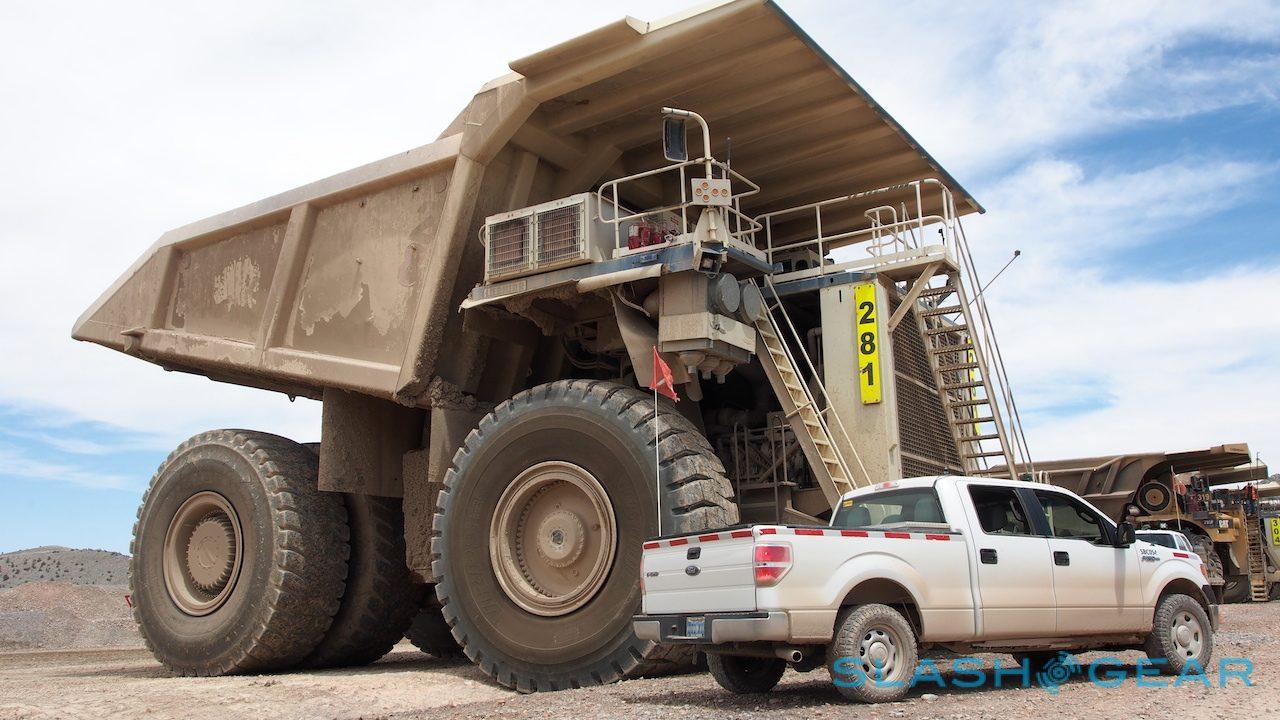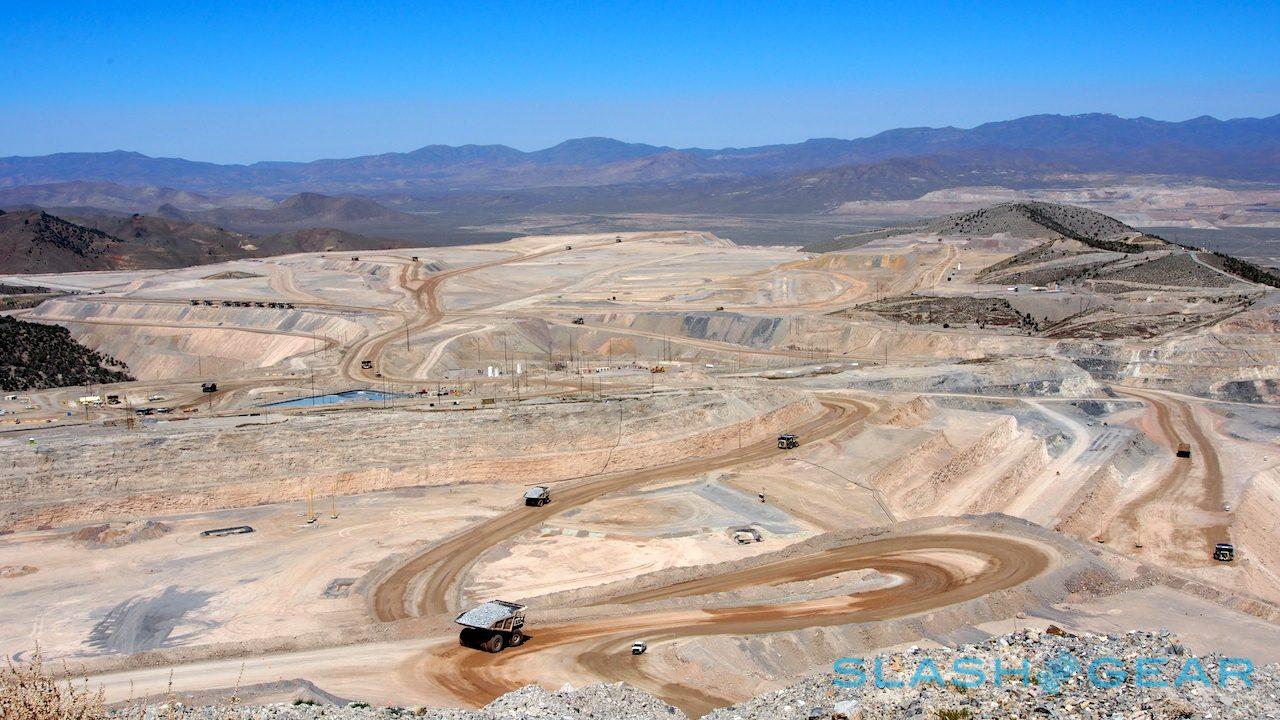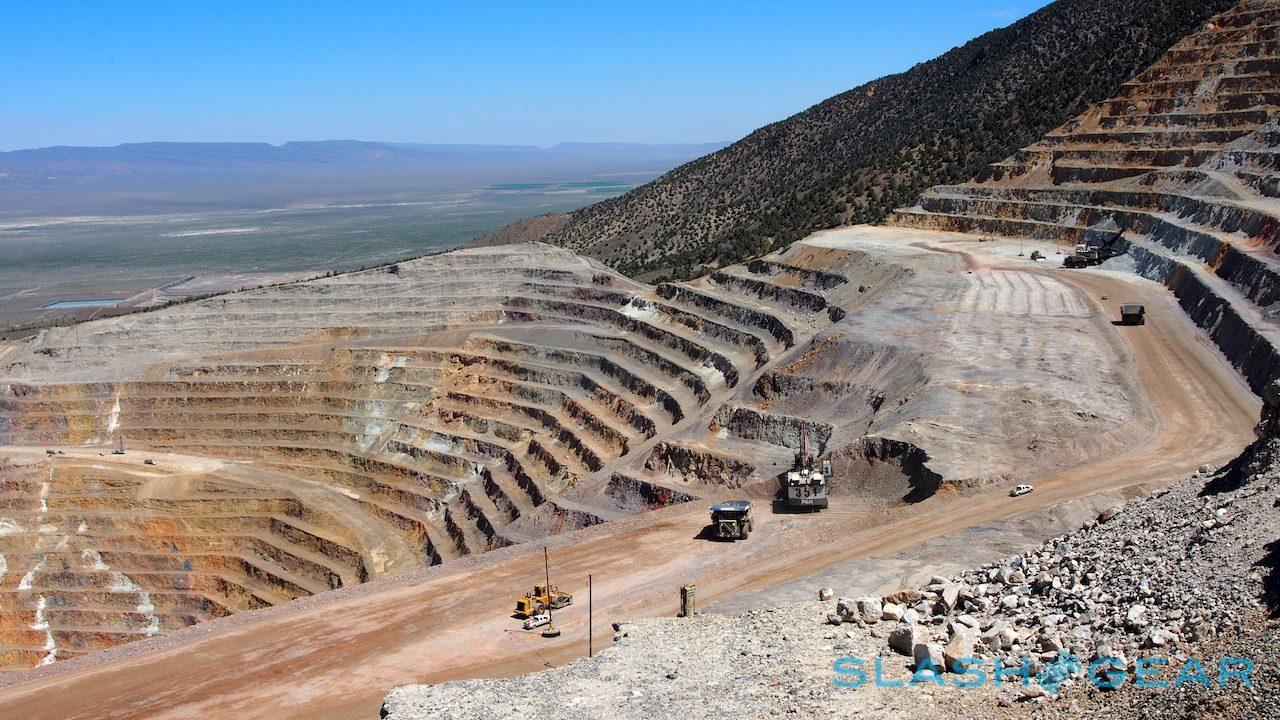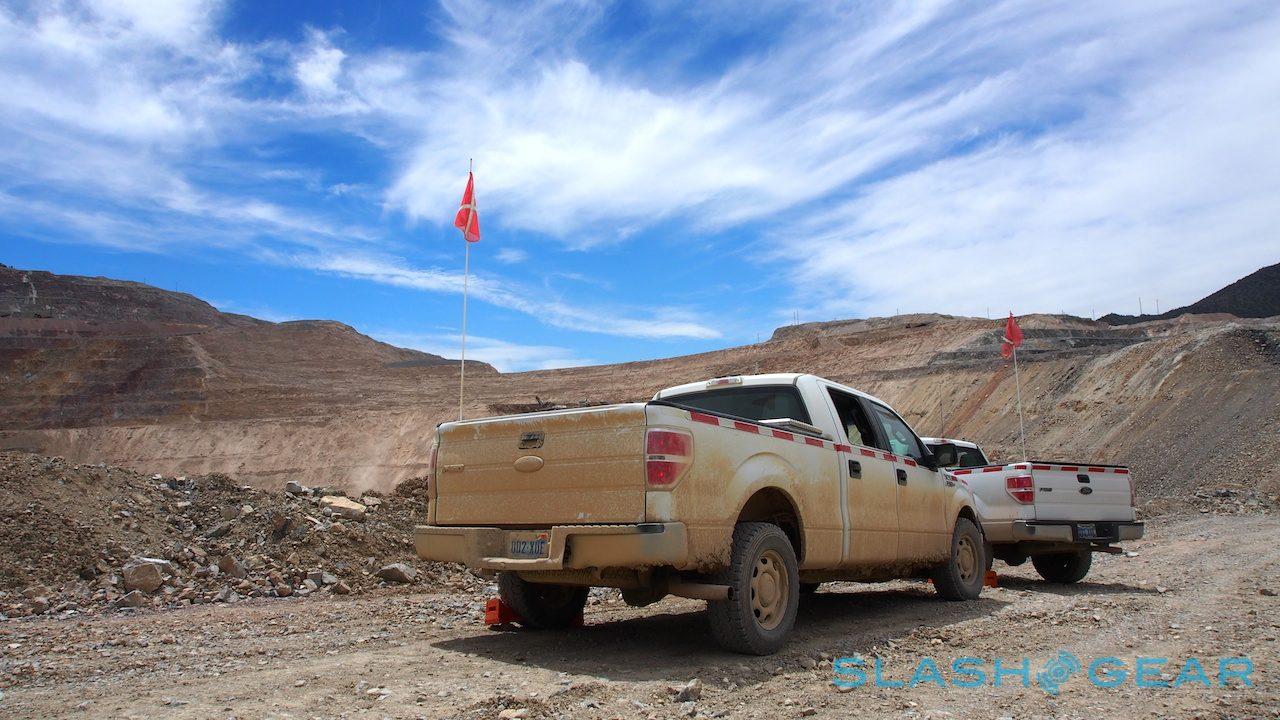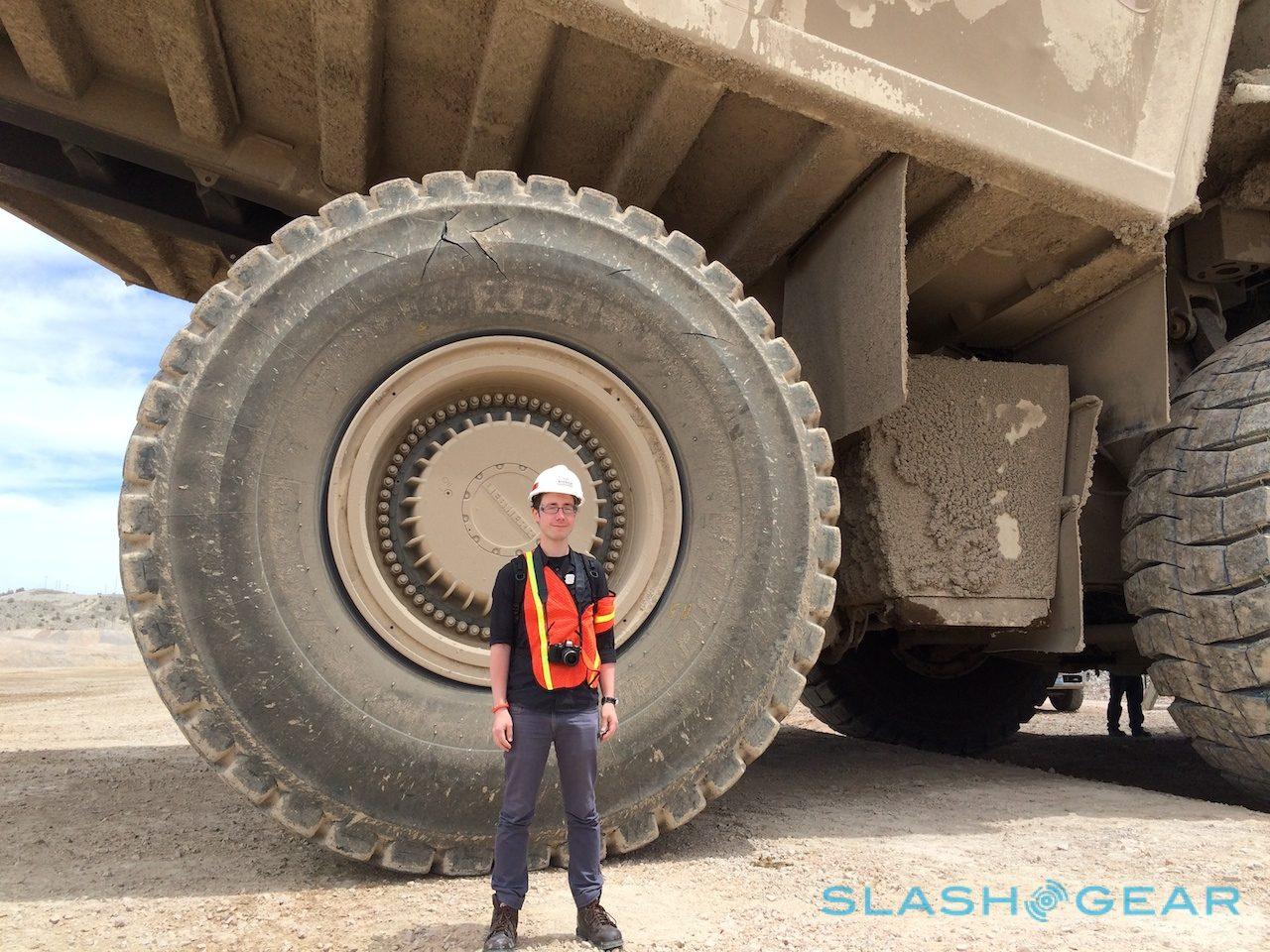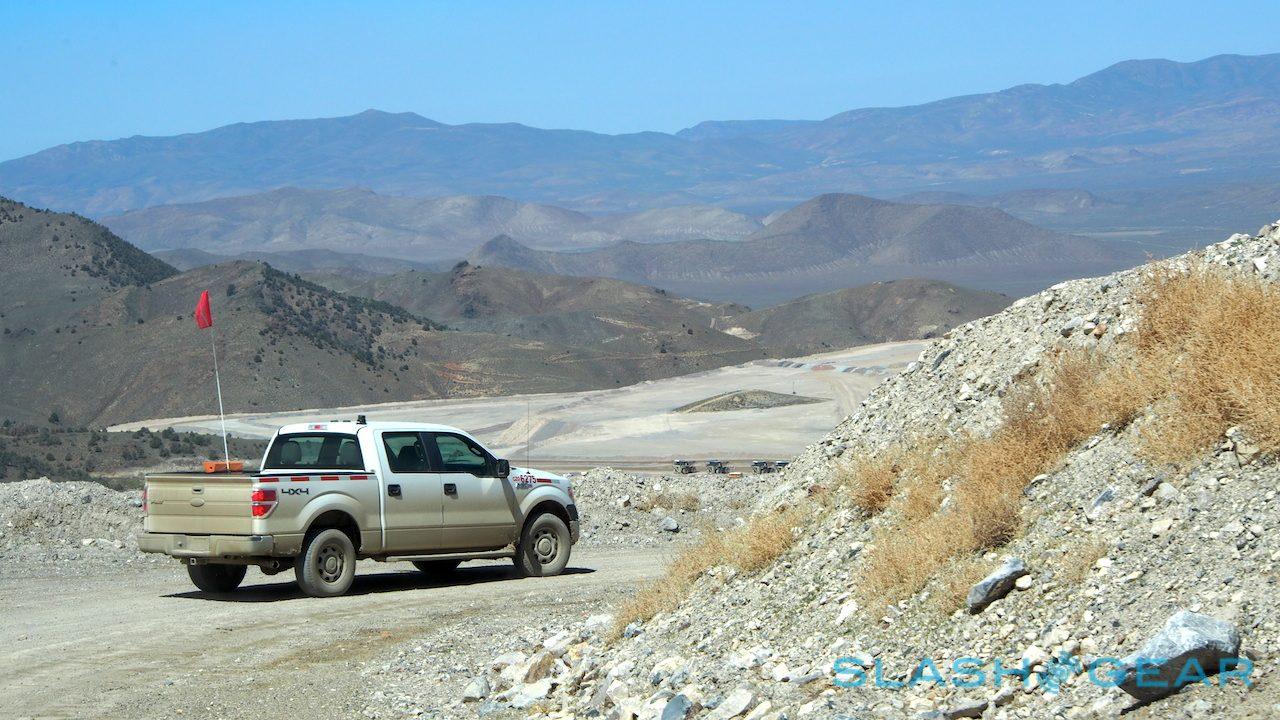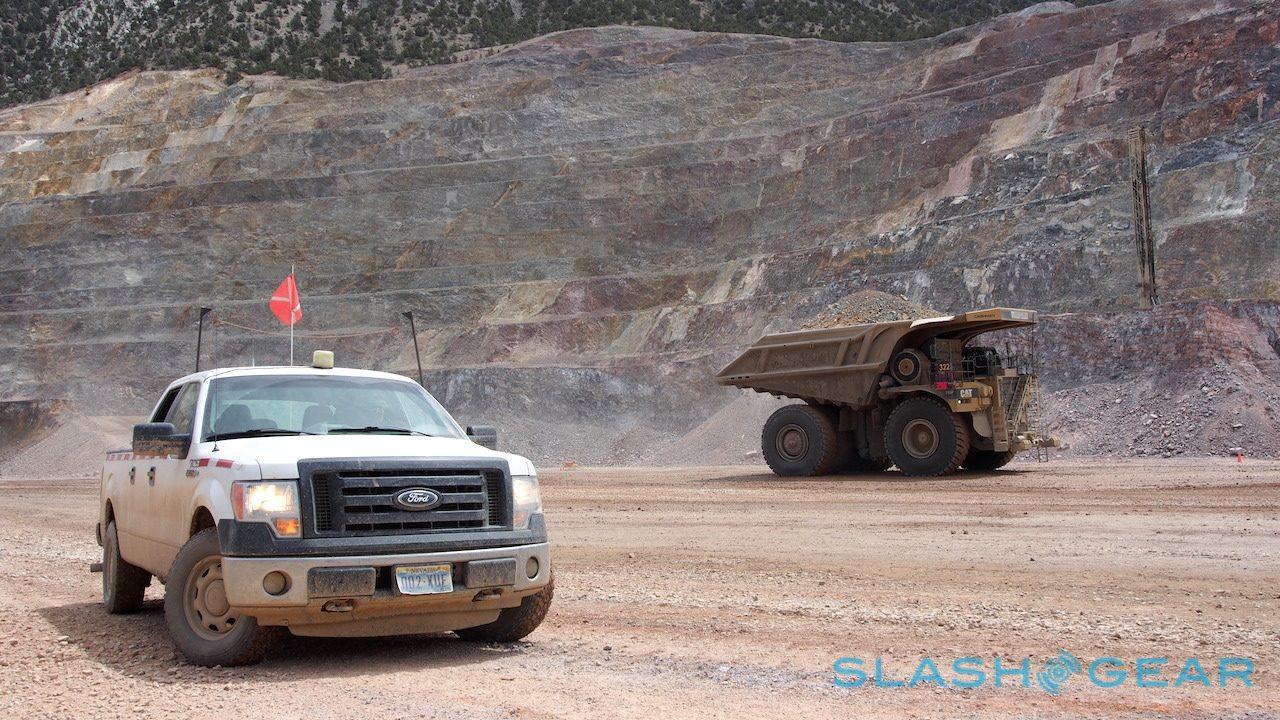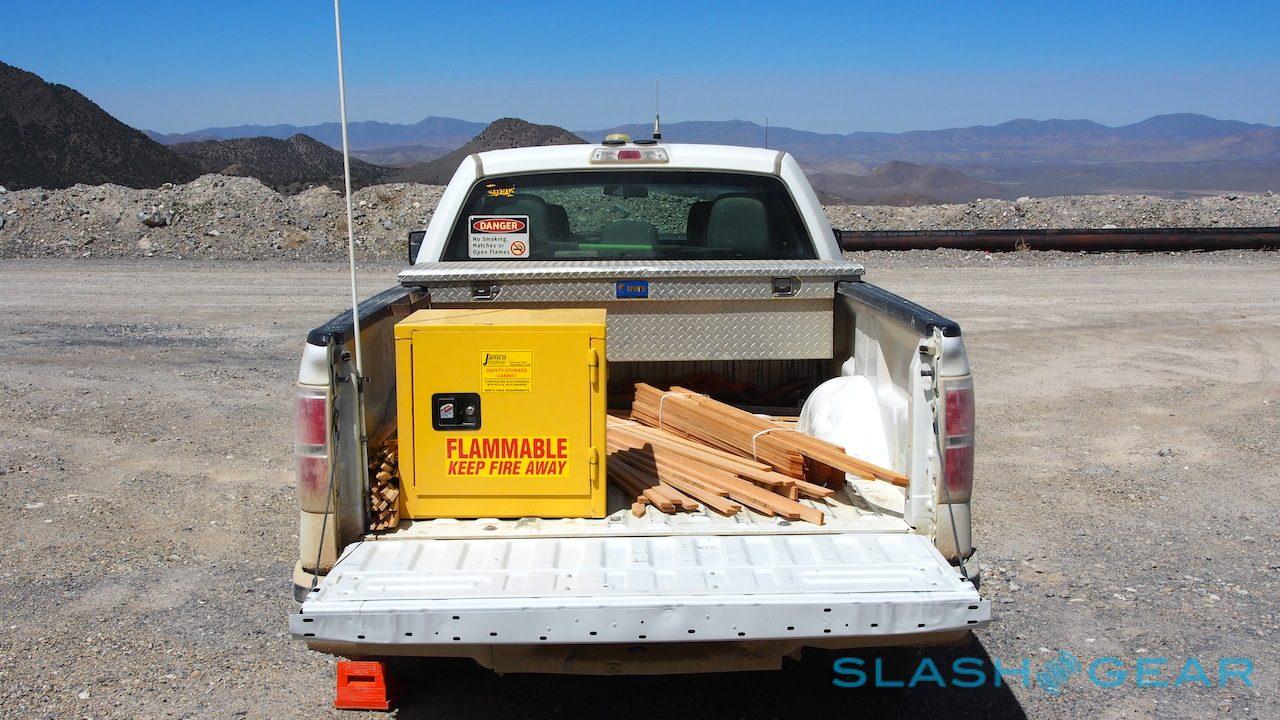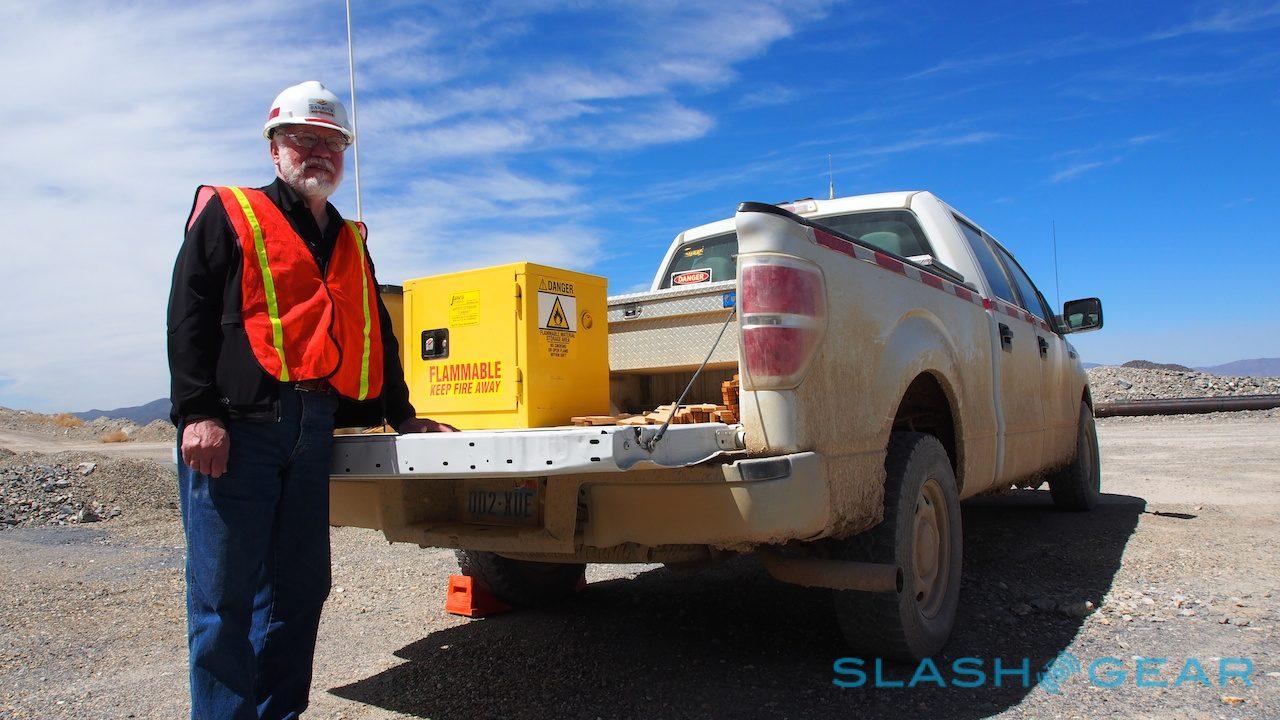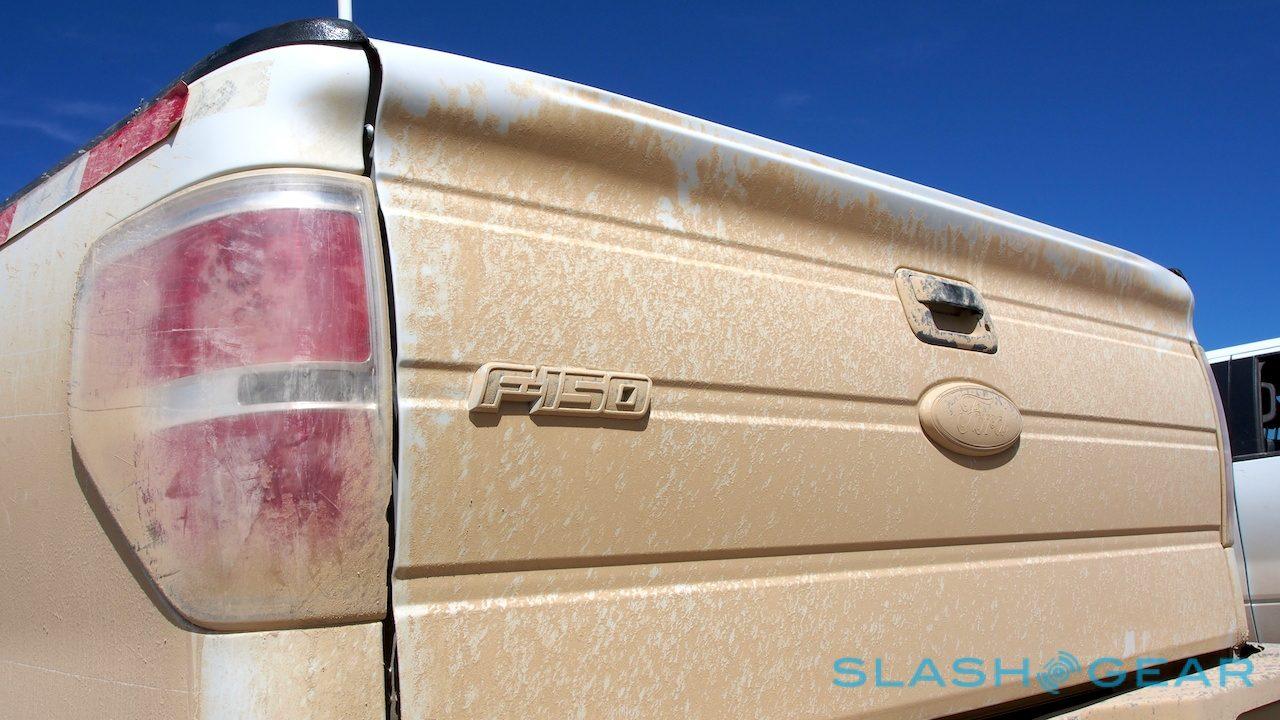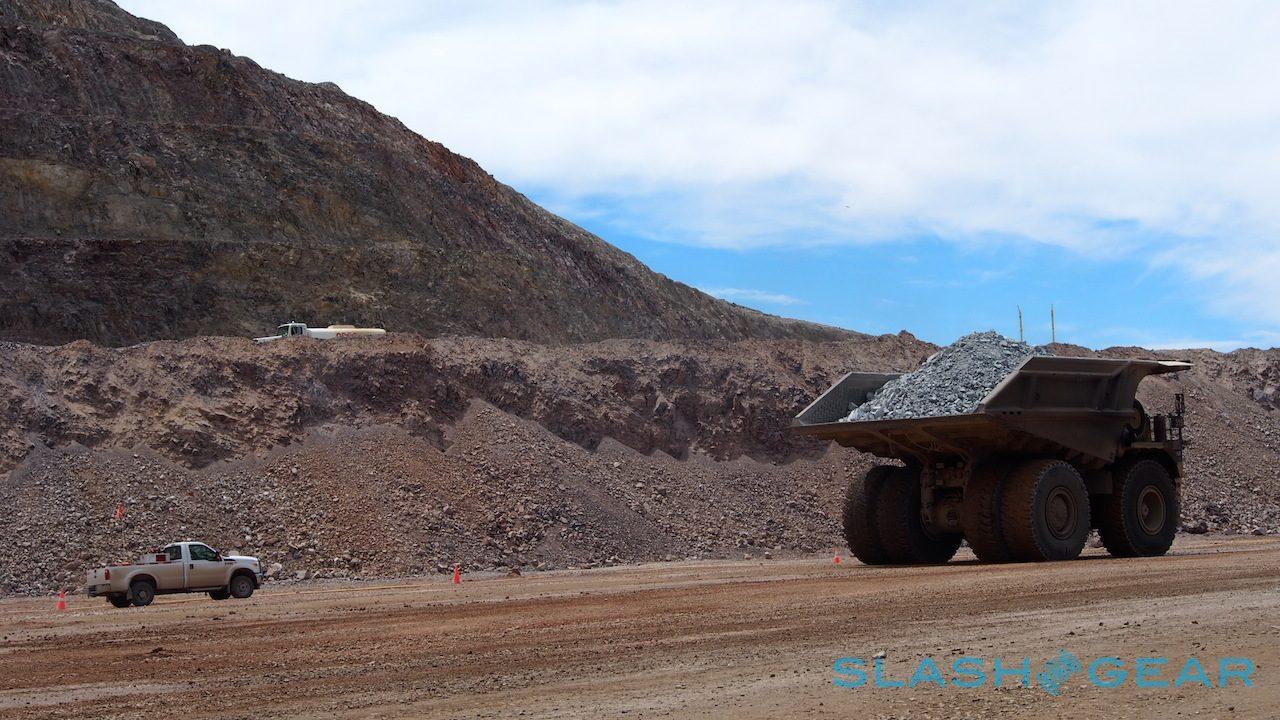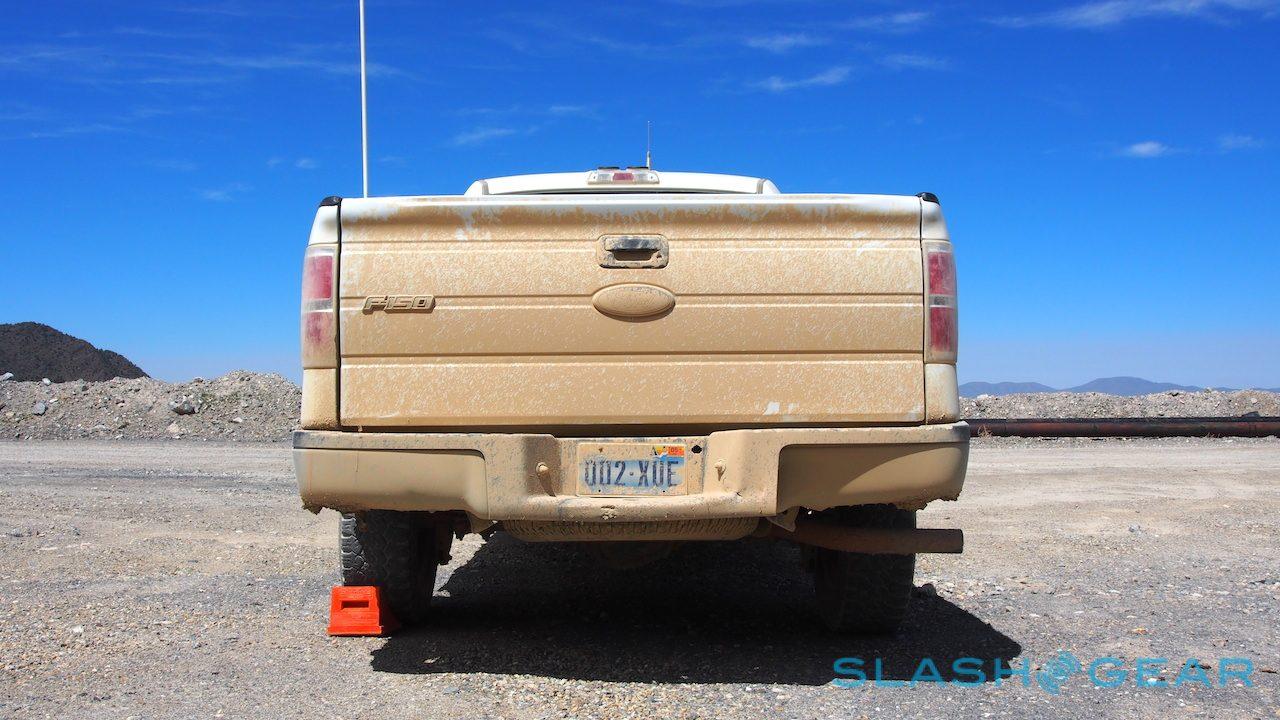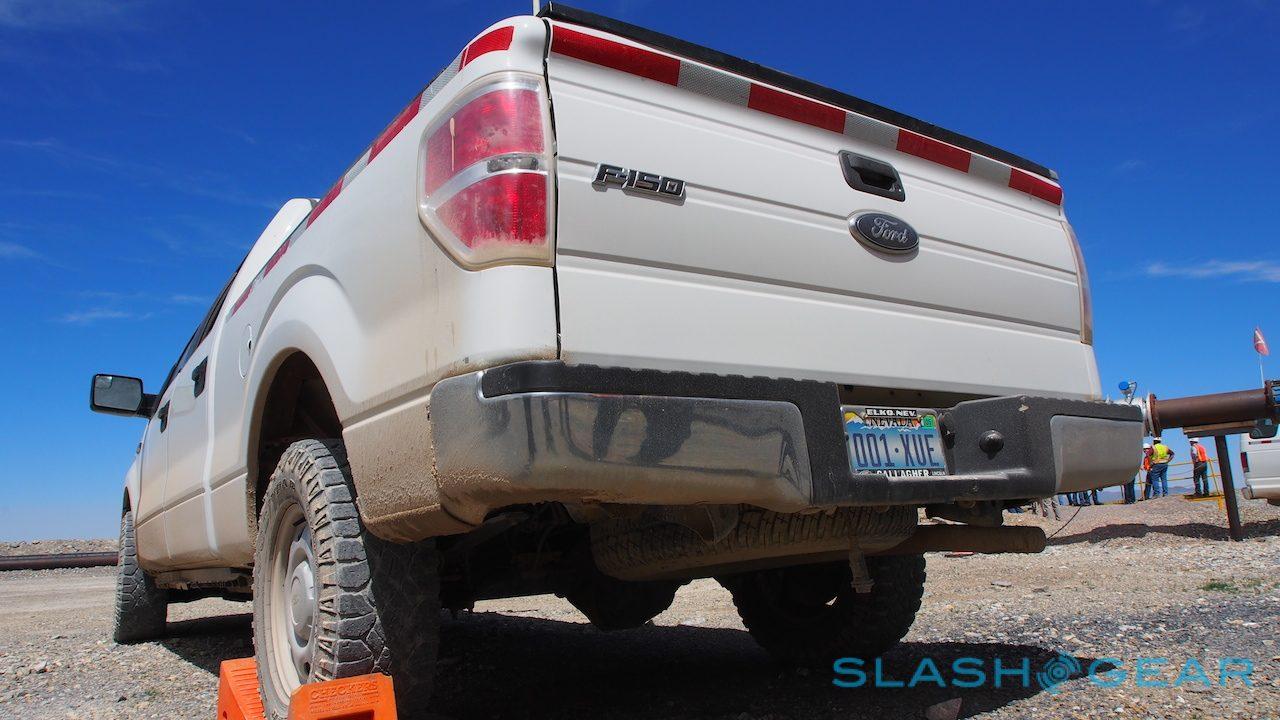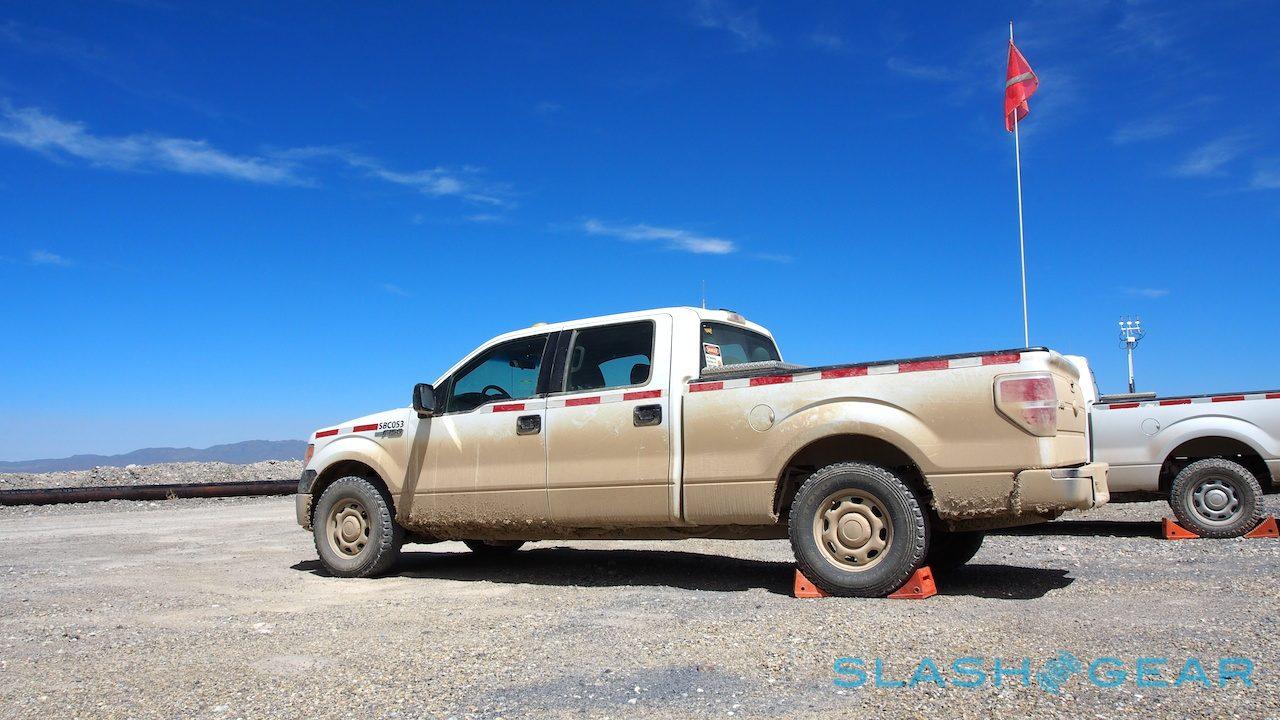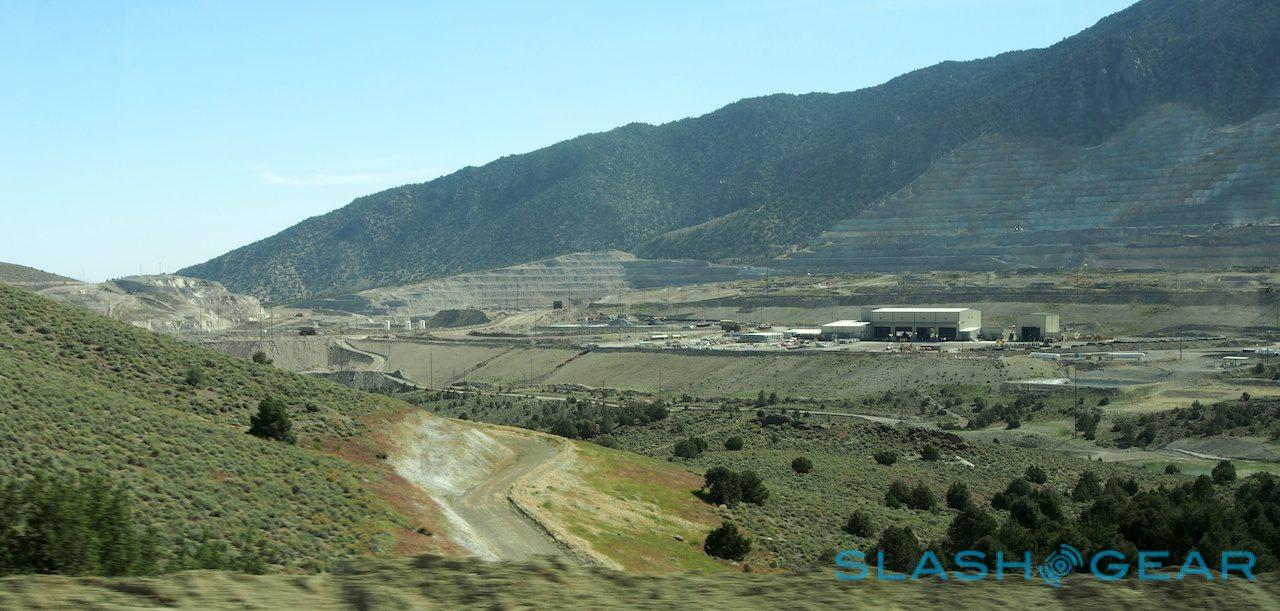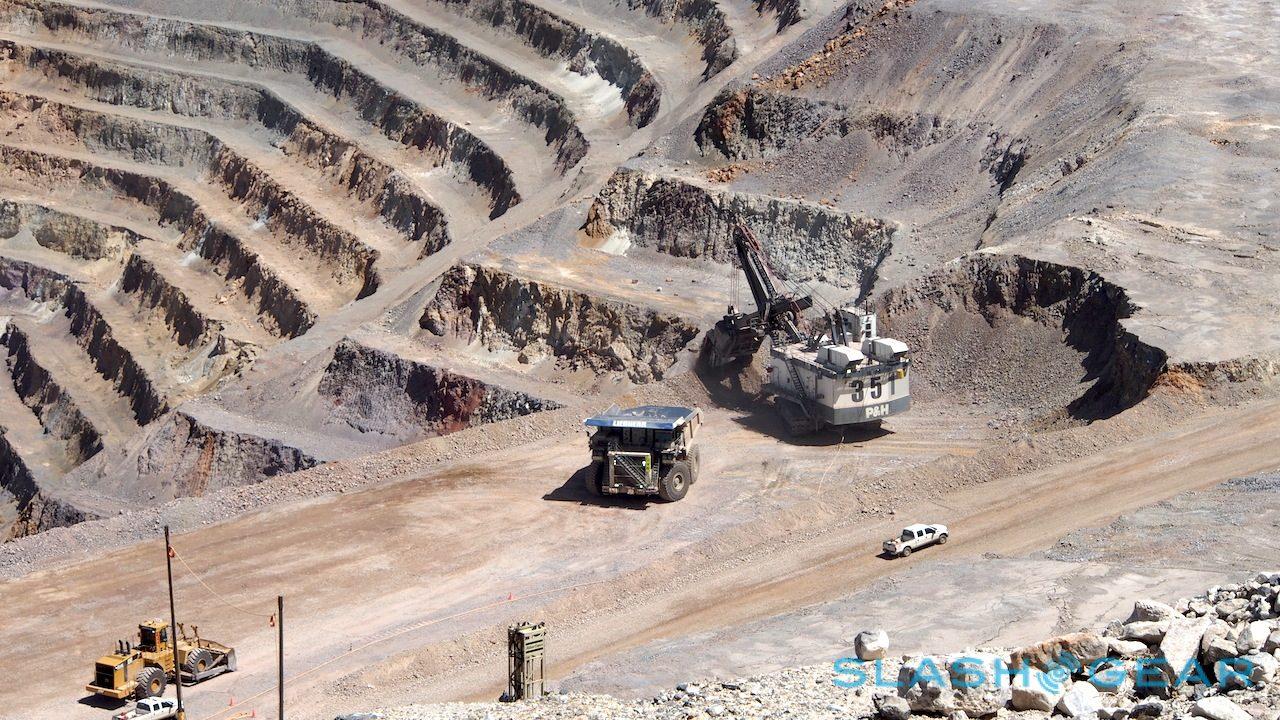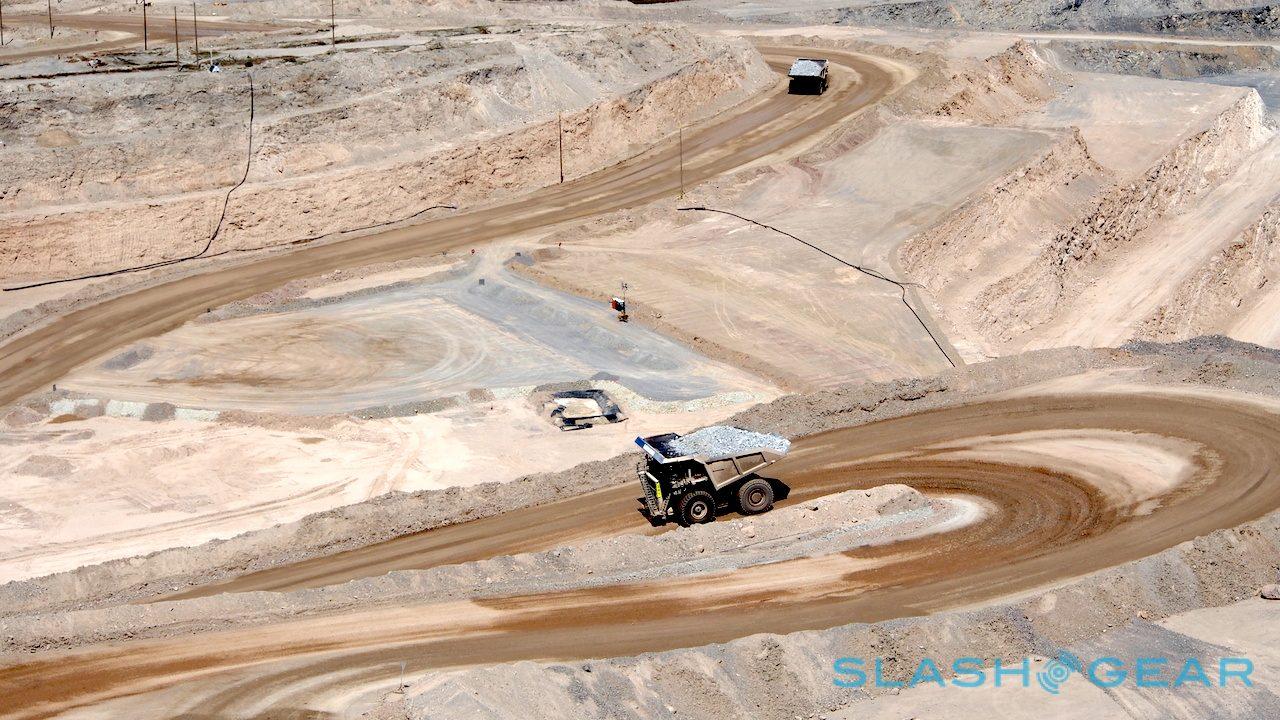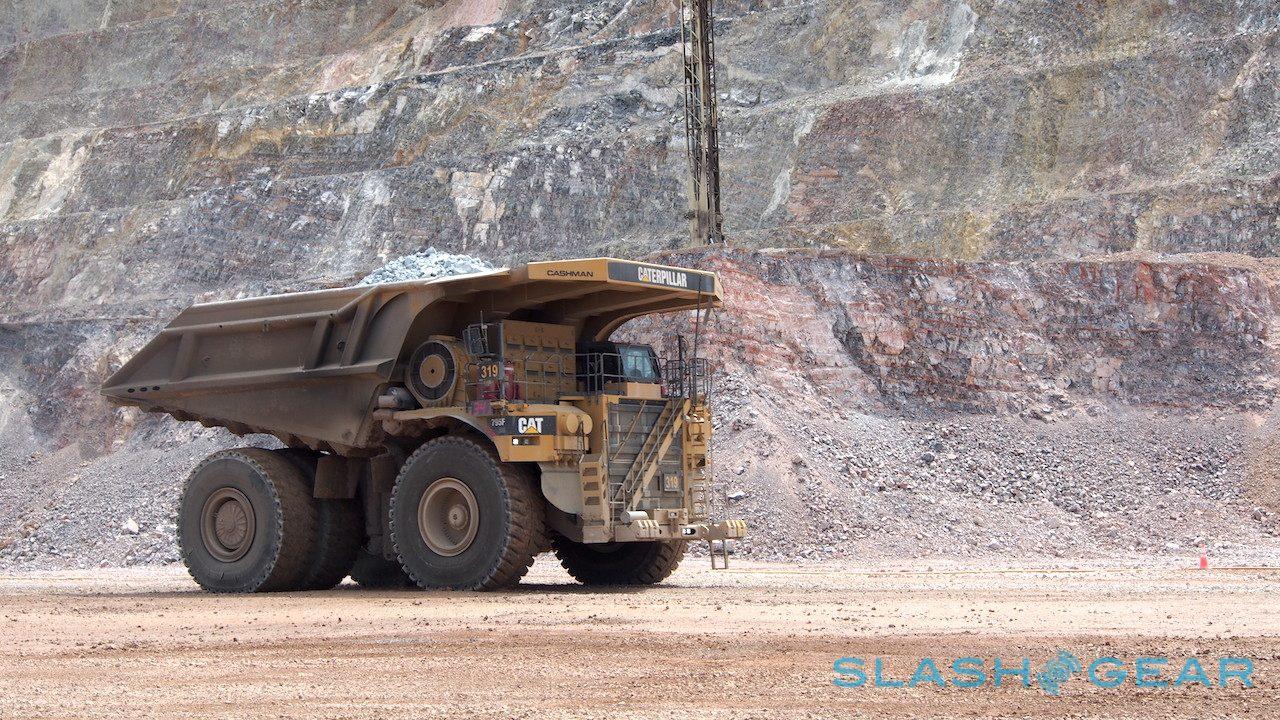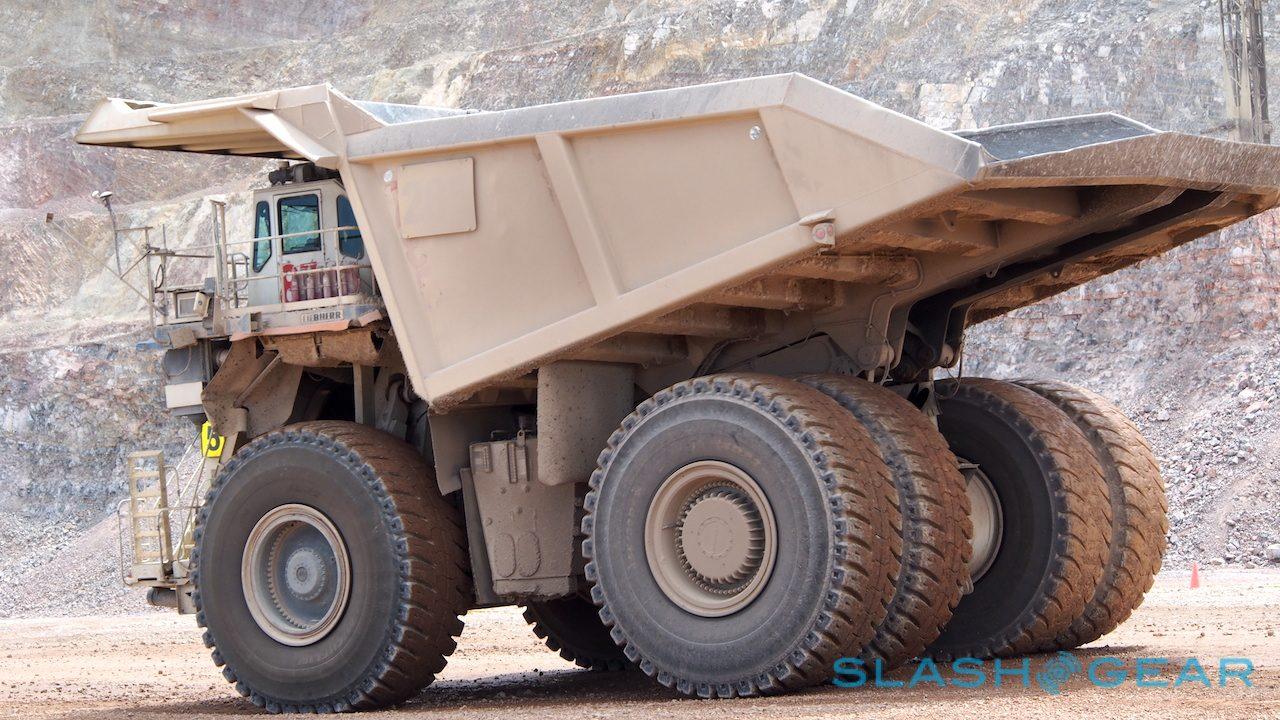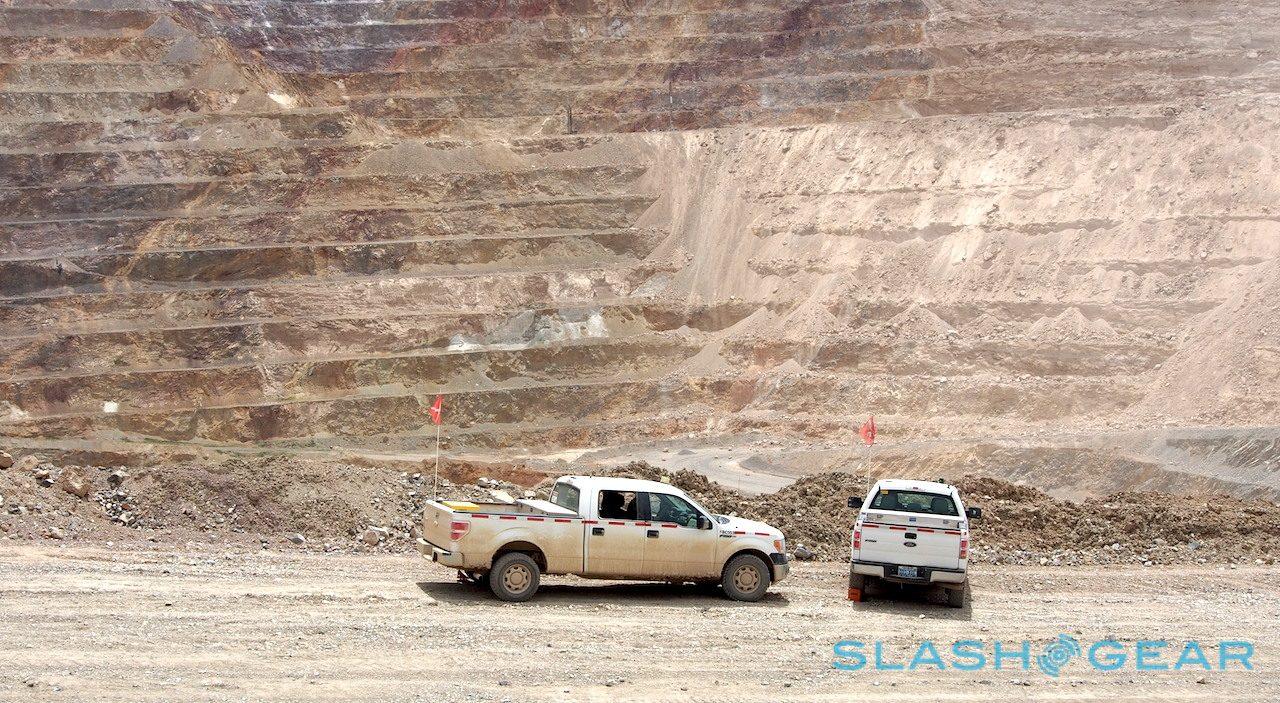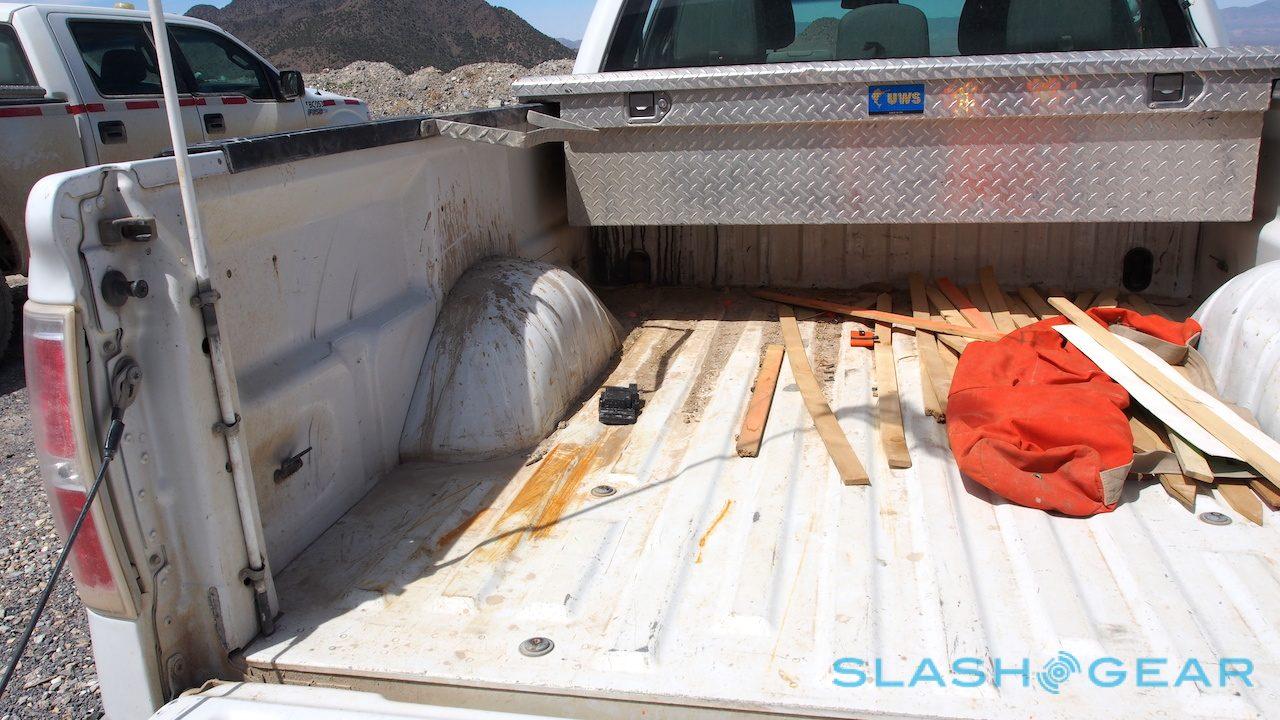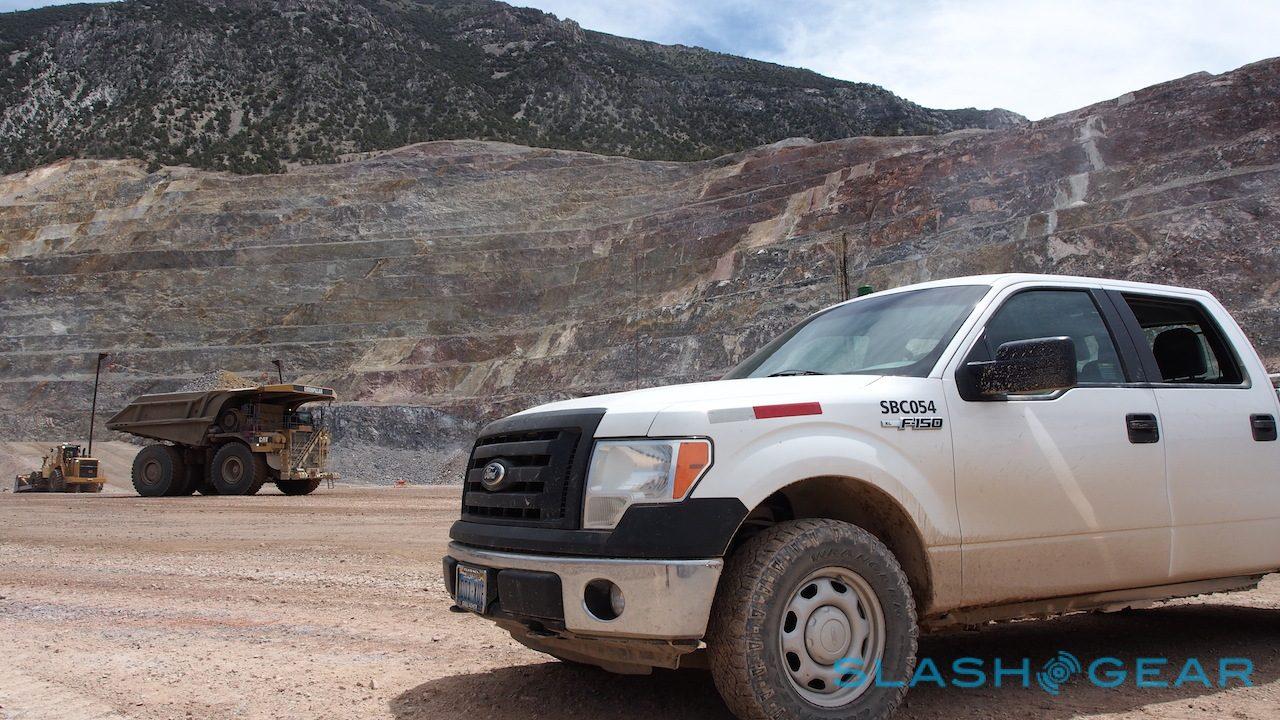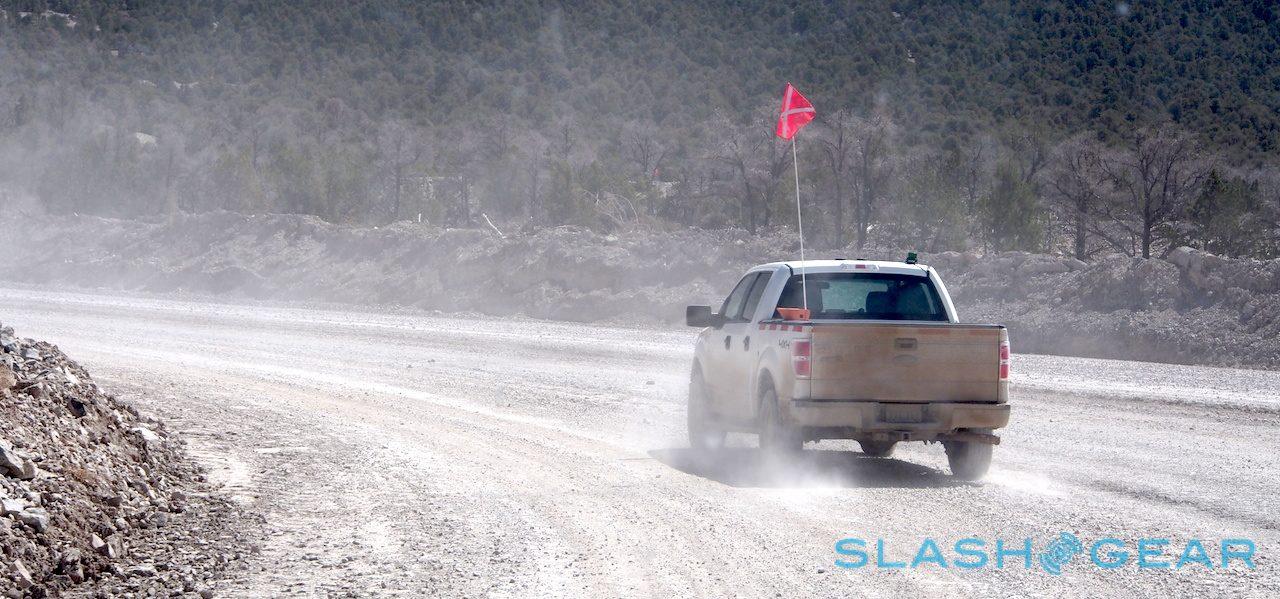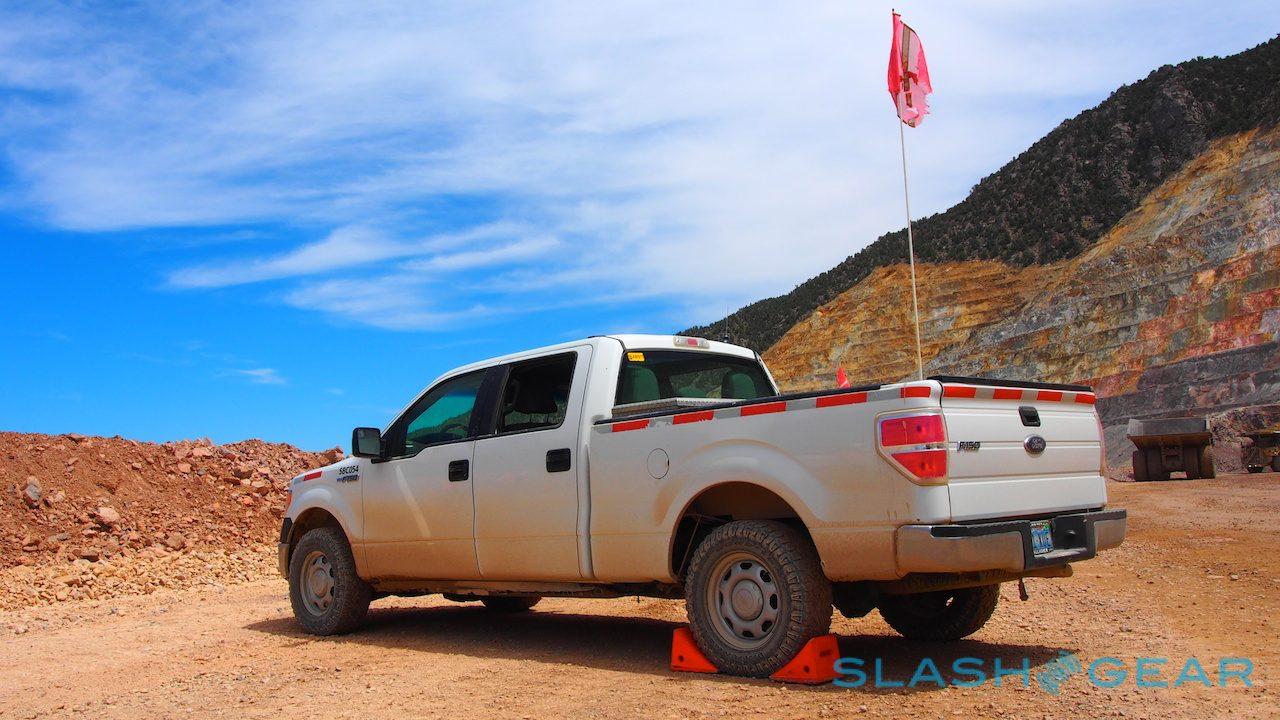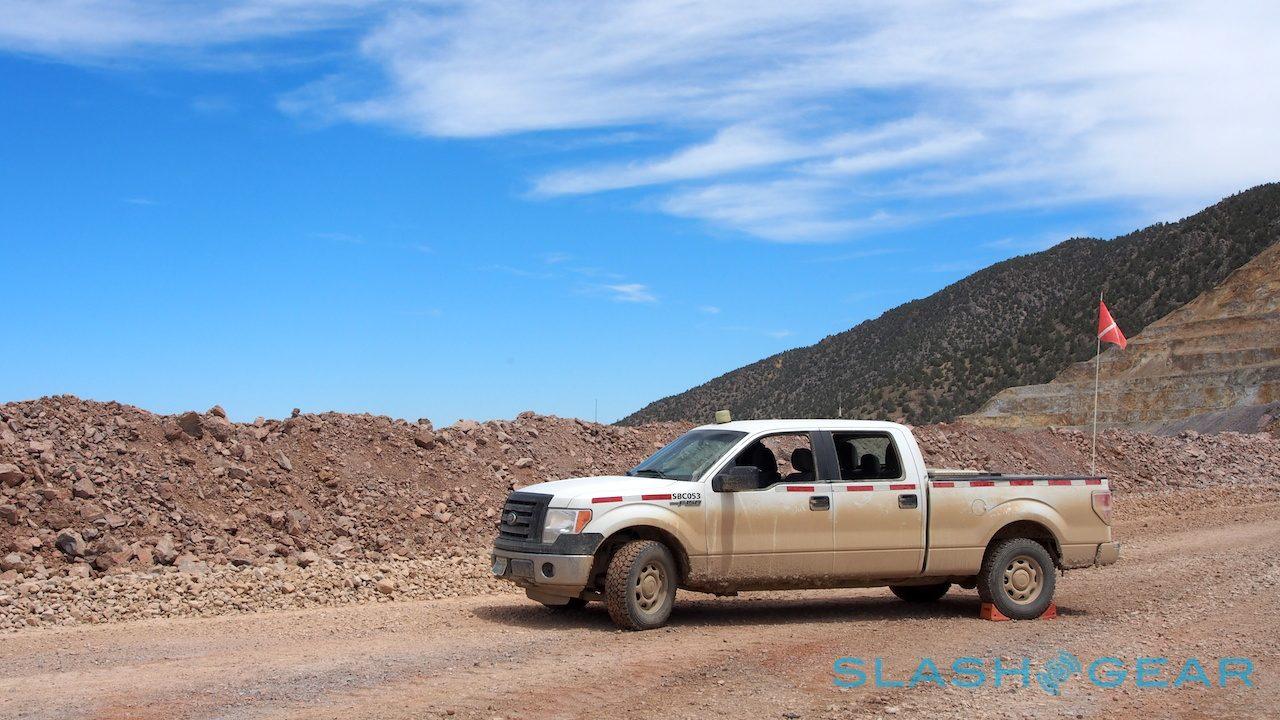Gold Standard: Inside Ford's 2015 F-150 Secret Testing
At first glance you don't notice the Ford F-150, not when there's a vast Liebherr T282B dump truck towering above. Looks can be deceiving, though: this is no ordinary Ford truck, but in fact an experimental prototype of Ford's new 2015 F-150, potentially worth more than the 2,700HP monster that looms over it. But, I'm getting ahead of myself. First of all I'm wearing steel-toed boots and standing in a gold mine in the middle of Nevada.
Cortez gold mine is about 62 miles southwest of Elko as the crow flies, a sprawling combination of open-air and underground excavation tasked with digging up microscopic gold and passing it on for semi-refining at a nearby plant.
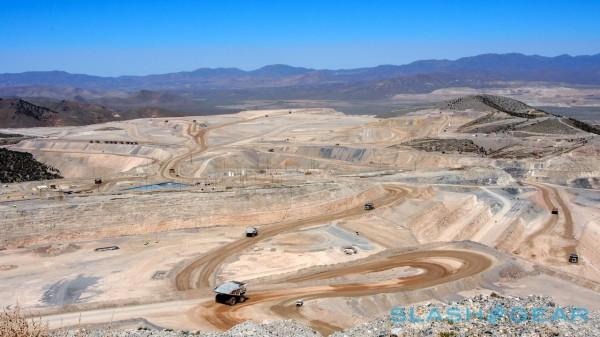
It's a facility of superlatives; in fact, the only thing bigger than the dump trucks are some of the numbers involved. Each of the haul trucks – and there are 55 of them – runs to about $4.5m, operated and supported by around 1,300 workers and a varying cast of around 300 contractors.
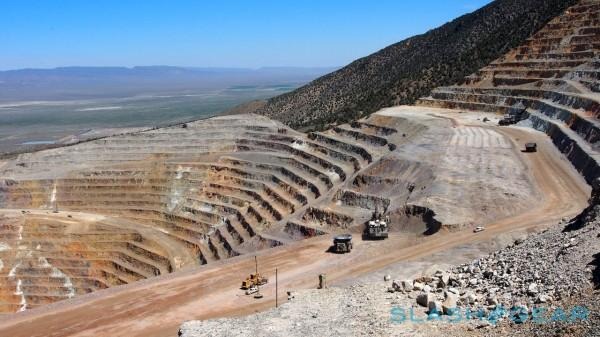
It runs 24/7, stopped only for Thanksgiving and Christmas, and covers more than a thousand square miles of Nevada scrubland. Joining the mine and the processing plant is a nine mile conveyor, consisting of one solid length of rubber belt. 90-95 percent pure gold ingots are spat out of the smelting machines, into armored trucks and sold off for further refinement.
Last year it produced 1.34m ounces of gold, worth around $1.68bn at today's prices.
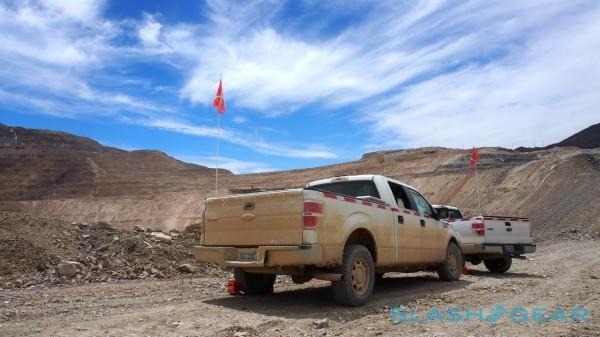
Barrick, the company which runs Cortez along with several other mines across the world, is a good client for Ford. There are more than 700 of the company's vehicles in the Nevada fleet alone, ranging from F-Series trucks through SUVs and vans. So it made perfect sense to use Cortez as one of the test sites when Ford decided it needed to put one of the most important elements of the new F-150 through its paces.
That's why I'm here.
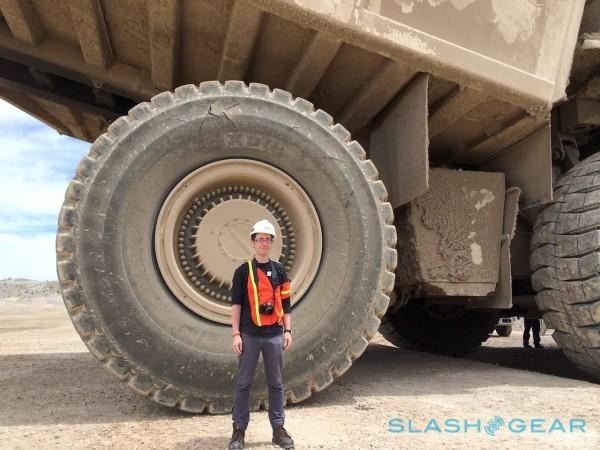
I'm standing in the shadow of a $50,000 tire, a crazed grin on my face, being driven half-mad by the constant honking of horns as millions of dollars of machinery extract many millions of dollars more of precious metals from rock. Barrick safety policy demands every driver sound their horn in a morse-like series of coded blasts whenever they want to move, and you spend your time constantly checking over your shoulder to see what you're in the way of.
A truck lives and dies by its utility, and the F-150 has a reputation more valuable than most. It's been the most popular vehicle in the US for more than three decades, and for the 2015 model, Ford knew it had to shake things up. So, for its thirteenth generation, the F-150 embraced aluminum.
Putting a military-grade aluminum alloy body on top of a frame rich in high-strength steel, Ford could cut over seven hundred pounds from the truck, while still leaving it stronger and lighter. Less weight means the potential for better fuel economy, and so Ford's 2.7 liter EcoBoost joins the engine line-up, a V6 with similar power to a midrange V8.
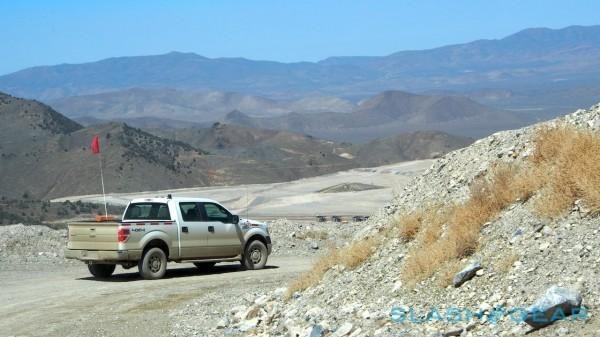
Aluminum is a risky undertaking, and Ford knew that preconceptions of kitchen foil flimsiness or soda can lightness could seriously undercut the F-Series' mystique of ruggedness. That would inevitably center on the load-hauling capabilities and so, two and a half years ago, Ford cooked up the X1 series, a range of prototype trucks based on the outgoing model but with a new aluminum bed, cast to look just like the old version.
Two prototypes were entrusted to the Cortez survey team. That may sound like a cushy placement, but it's actually the sentence for a nightmare existence if you happen to be a truck.
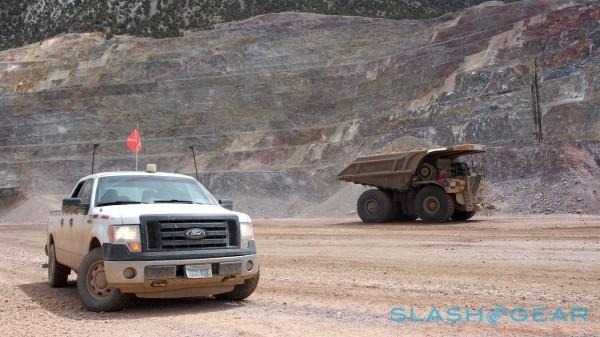
The survey team is usually among the first onto the scene post-blasting, which means navigating sharp chunks of raw granite and other rocks long before they've been pummeled into anything approaching a regular road surface. Even the good roads at Cortez are generally bumpy enough to shake your fillings loose. If it rains, the dumpers don't stop moving, but they do churn things up to the point where the mud would be halfway up the F-150's door if you were foolishly ambitious enough to attempt to drive them.
Exactly what they were driving was kept a secret from the miners. The only instructions supplied were that the surveyors should treat the X1 pair just as they would a regular F-150, with no special treatment. Even the Ford dealerships which delivered the trucks were in the dark about just how special the two vehicles were.
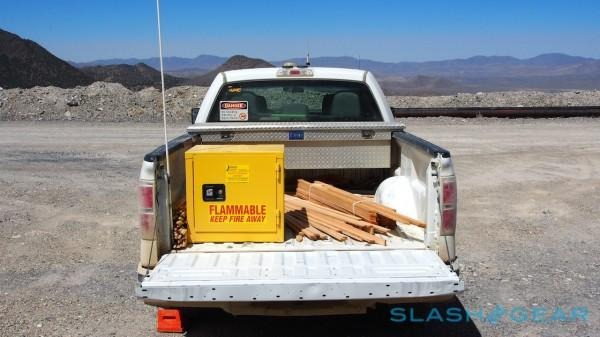
When the F-150 auto show news broke, in fact, one of the local mechanics who helped prepare the two mules called up X1 project lead Dennis Kansier. "Was that the truck you sent us two years ago?" he asked, incredulous.
Park the X1 next to a 2014 F-150 and you'll struggle to see anything different. The only real styling change is at the upper extreme corners of the bed, where the aluminum couldn't be quite coaxed into the sharp point that the old, steel version has. The survey team only realized something was weird when the magnets used to attach their sensitive GPS loggers wouldn't stick.
"Is it some sort of new composite?" they asked Kansier on one of his regular visits to see how his cuckoos were doing.
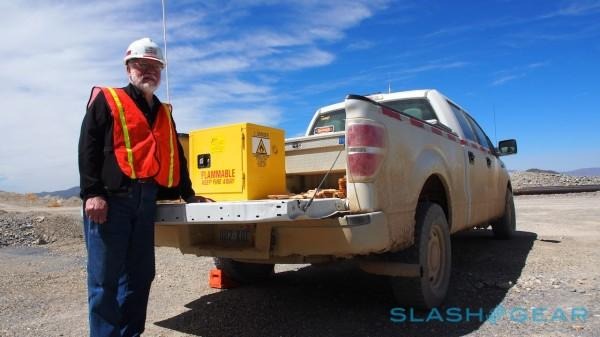
The conditions may be unkind, but the prototypes have held up well. One area of initial concern prior to the tests had been the spot welds holding the bed in place, later shown to be a non-issue despite the constant bumping and vibrating. The rust-resistant aluminum cargo area meant the survey team didn't need to use bed-liners: there are scratches, sure, but nothing structurally concerning even after getting on for 100,000 miles apiece.
Side by side with similar-age regular F-150s, I struggled to see a difference when it came to dents and dings. Ford has used thicker aluminum than the metal body of the old steel truck, too; the claim is that it's actually more dint-resistant than before, and I can believe it. In total, Ford will have put the 2015 model through ten million miles of testing by the time it launches: two million more than the model before it, and twice what the 1996 model endured.
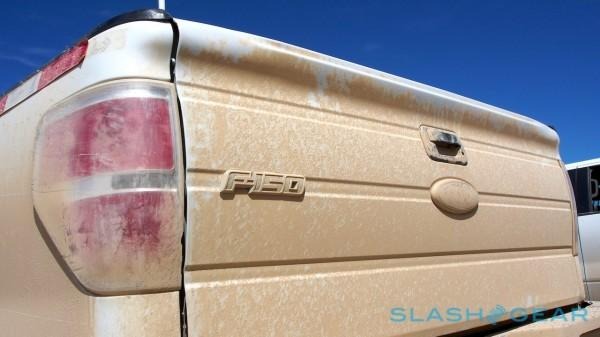
There are still plenty of questions about the 2015 F-150. Ford is yet to allow press to actually drive it – I could give you passenger impressions of the X1, but they'd just be of the old model – though is promising a ride that's not only more economical but better at hauling loads.
The F-150 team told me that what surprised them most when they tried the preproduction trucks was how solid and stable it feels on the road, too, a combination of a lowered center-of-gravity and some careful weighting at the corners. It's easier, they said, to artfully add back in a little heft than it is to compensate for it.
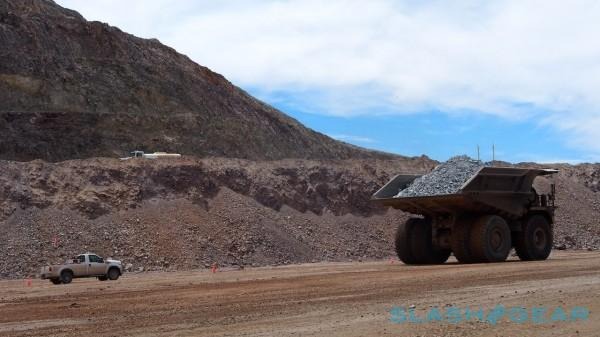
We won't know how true that is until later in the year, when Ford hands over the keys to the new truck to drivers from outside of the company for the first time. Then we'll see if Ford's gamble has paid off: if it all works out as planned, it'll leave the company at least two years ahead of the competition, F-150 program manager Larry Queener told me.
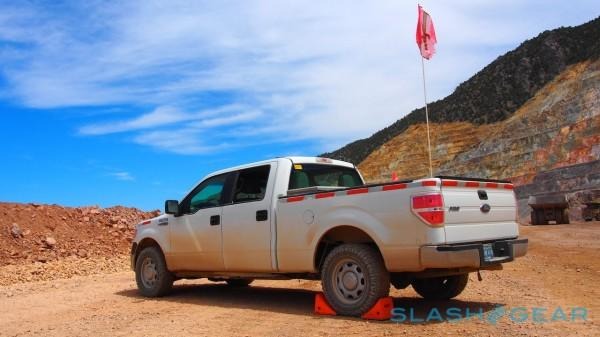
Watching the X1 prototypes carefully navigate around multistory dump trucks weighed down by 350 ton loads, around deep and oddly beautiful gouges in the earth, the scale of the challenge of extracting gold from dull rock suddenly seemed immense. Meanwhile, Ford is about to discover whether the changing of steel into aluminum counts as its own special type of alchemy.
Thanks to Ford and Barrick for hosting me at the Cortez mine

